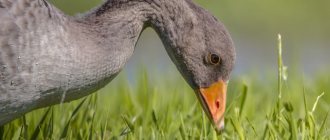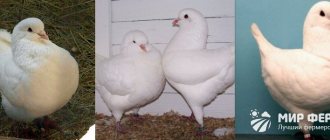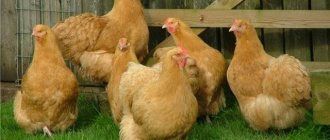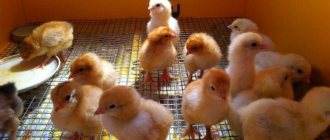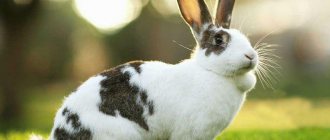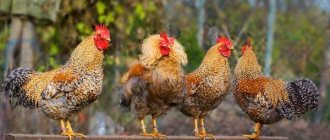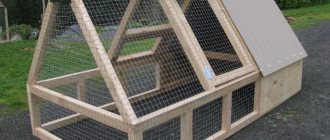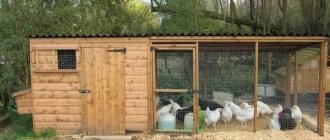Before you start letting your chinchilla out of its cage, you need to tame it and learn how to pick up the animal.
Once you have brought your chinchilla home and have chosen a suitable location for the cage, you can move on to establishing a relationship with your pet. You definitely need to win his trust. For the first two weeks, or even more, do not let the chinchilla out of the cage. Remember that she found herself in a completely unfamiliar place, and she needs time to come to her senses and look around.
Your pet should get used to you and his crate before he goes out to explore the house.
We take the chinchilla in our hands
Two weeks passed. You have become friends with your pet, and he runs towards you to play every time you open the cage. Now you can try to pick up the chinchilla; to do this, carefully clasp the animal with your hands on both sides, supporting it from below, and carefully place it on your knees. Do not remove your hands to help your chinchilla feel safe. If she starts to get restless, put her back in her cage and give her a carrot. Repeat this exercise for several days.
Once you sit your chinchilla on your lap, gently hold it with your hands so that it feels safe.
Moving toys
Movable toys help your pet stay in shape. Chinchillas love hanging structures. They stagger, rattle and ring. The animal can swing them in different directions. With the help of them he can grind down his teeth. Rodents prefer to play at night, so moving toys have a downside. Not every owner is ready to tolerate loud noises at night. Therefore, they must be removed so that the pet plays only during the day.
walking ball
With the help of such an item, the animal will be able to walk around the apartment without fear of being crushed. Thanks to this, furniture and wires will remain safe: the animal will not be able to reach them. Durable transparent plastic is used as the material for the ball. It must have holes for ventilation. The design consists of two hemispheres that unwind or close. Before purchasing, you should pay attention to the disadvantages of the toy. Small holes do not provide proper ventilation of the air inside the ball. Leaving your pet for a long time can lead to suffocation. You should not leave the animal in such a toy unattended.
Hanging toys
When they first appeared, hanging toys were used for birds. Over time, they began to be offered to rodents. Animals like shaking structures that make a ringing sound. Excessive noise is the main disadvantage of such toys. So that the pet and the owner can take a break from the ringing, it is necessary to remove the hanging object from the cage at night.
Spinning wheel
The wheel is very popular among rodents. A chinchilla can run for several hours, skipping sleep time. Wood, metal, plastic and aluminum are used to make wheels. A metal product is considered the most durable and durable. However, there are dangers when using it:
- When keeping several animals in one cage, the metal wheel stand can pose a danger to them. While one animal runs, another can seriously damage its paws.
- Your pet may get a claw or fur caught in the mesh used as a wheel cover.
To ensure safety, the exercise machine is covered with thick fabric. The plastic version does not have a stand, so it is less dangerous. The wheel is attached to the wall of the cage. The maximum diameter size is 32 cm. It is not suitable for many animals. Therefore, it is better to buy a wooden or aluminum wheel. Their diameters are much larger and can reach up to 40 cm. A wooden product cannot be bought at a regular pet store. It can be made to order, or made by yourself. The aluminum trainer is not so popular due to its high cost. It is due to delivery from abroad.
Making a spinning wheel at home
To make a rotating wheel with your own hands, you will have to put in a lot of effort. Proficiency in wood or metal cutting will be a plus.
Materials and tools needed for the wheel:
- a tool for cutting metal, for example, a grinder;
- fine-grained sandpaper;
- aluminum pan - diameter not less than 40 cm;
- nut and bolt.
After purchasing all the necessary items, we begin making the simulator:
- The first step is to saw off the excess edge of the pan. Its height should be about 15 cm. To avoid injury to the pet, the edges are sanded with sandpaper. A hole is drilled in the center of the bottom of the pan.
- The future product is placed inside the cage. Using a bolt, the workpiece is attached to the rods. From the outside, you need to tighten the nut so that the wheel rotates freely.
A homemade exercise machine is much safer than a purchased one. The finished product should be checked for functionality. If the wheel does not spin, the nut must be loosened.
Requirements for the toys used
There are certain standards that toy devices for chinchillas must meet. First of all, they relate to the material of the products - the list of prohibited items includes:
- rubber;
- low quality plastic;
- cement, lime;
- paper and cardboard products;
- glass.
Some types of wood should also not be used. For example, oak, cherry, and conifers contain resin, which will certainly end up in the stomachs of these lovers of chewing everything. Resins can cause digestive upset and poisoning. There are other contraindications:
- the presence of small objects that the animal can bite off and swallow;
Toy with small objects - factory dyeing on toys - even if the paints are made from safe substances, the animal’s skin easily takes on their color. Give preference to items in neutral colors or without colors at all;
Bright dyes - sharp corners, jagged edges that can easily cause injury.
Rough surface of products
It is recommended to have a variety of different toys in stock that will diversify the life of a rodent. But you need to put them in the cage gradually so that your pet doesn’t quickly get bored with them. Too many play equipment clutters up the living space needed for free movement around the cage.
Prices for toys and decor for rodents
Selection rules
Before giving your chinchillas any accessories, you need to know the rules and regulations for using these toys. First you need to understand what material the accessory is made of. Chinchillas are prohibited from giving toys made from:
- rubber;
- low-quality plastic;
- cement;
- lime;
- paper;
- cardboard;
- glass
Also, some types of wood are contraindicated for these pets.
There are some other selection rules that will have to be taken into account when purchasing.
- The chinchilla will be able to bite and swallow small objects.
- You should not purchase toys that have been painted, because the skin of the animal may rub against the paint, which can lead to poisoning. It is better to purchase accessories that have neutral tones or are completely colorless.
- It is forbidden to buy toys with sharp corners and jagged edges, because the chinchilla may get hurt.
How to do it yourself?
You can make various toys for animals with your own hands, so you will definitely be sure of the environmental friendliness and benefits of the resulting product.
Shelf
To make a shelf, you must follow the following rules:
Hammock
You can also design a hammock yourself. For this you will need:
Making a hammock is as follows.
Some improvised materials can also be toys for chinchillas. At the same time, it often turns out that you don’t even need to go to the store, because chinchillas can happily play with things at hand. Give your pet things to chew, roll, and push.
You can see how to make a toy for chinchillas with your own hands in the following video.
Source
Making a running wheel
You can make a toy for your pet yourself. Typically, homemade models are made of wood: the material is environmentally friendly, affordable and allows you to make a wheel of the required size. Even taking into account the fact that the animals will gnaw the wood, this version of the wheel is in many ways more economical than buying it. If desired, you can sheathe the outside of the wooden case with metal - this will extend the life of the running wheel.
For production you need:
- A sheet of plywood, no more than a centimeter thick,
- Electric jigsaw,
- Drill,
- Bearing or tensioner for an engine from any car,
- Self-tapping screws,
- Screws,
- Bolt,
- Small planks, three centimeters wide and about fifteen centimeters long.
In order to cut an even circle, first cut a small hole in the center of the plywood sheet with a jigsaw. The required radius is measured from its center. The jigsaw is bolted to the table through the hole made. During cutting, the plywood is rotated around its axis along the intended circle. The result is an even circle of the required diameter.
Next, you should cut out a ring with a similar outer diameter. The planks are fastened inside the wooden ring with thin self-tapping screws. You should first drill the holes with a drill and a 1.5 mm drill bit - this will protect against cracking. The ring is attached to the outside of the resulting plywood circle to give greater strength.
The next step is the rotation unit and fastening. For fastening, a bolt of at least fifteen centimeters long is used. A steel washer with a diameter larger than the bolt is placed on the bolt (so that it does not press into the plywood). The bolt is inserted inside the resulting structure and secured on the outside with a similar washer. A tensioner is put on the bolt and secured with self-tapping screws to a wooden plank. Advantage - the plastic tensioner cage does not produce noise when rotating. The toy is ready!
There are two ways to install a toy in a cage. The entire structure can be attached to a wooden plank or plank using one or two self-tapping screws and installed on the floor of the cage. The board should be wide enough - at least 10 cm. Otherwise, the animal will easily turn the toy over. In the second method, the bar to which the tensioner is screwed is secured with wire to the cage wall. This option is more convenient - the toy is attached more securely and even very active rodents cannot turn it over or move it.
Chinchillas are very active animals. Nature has designed it in such a way that they need to constantly move.
. In order to add variety to a pet's life, many owners try to equip the cage with all kinds of toys.
If a chinchilla lives in a small cage where there is no opportunity to move a lot, then it must have a running wheel. With its help, the animal will be able to maintain physical activity.
The sizes of running wheels should be selected taking into account the age and size of the chinchilla. Pet stores offer a simulator with various diameters - from 28 to 45 cm. The manufacturing material can be:
- metal;
- plastic;
- tree.
Wooden
The average cost of a custom wheel is 4,000 rubles
. They are mainly installed in display cages. A distinctive feature is their noiselessness. But they have certain disadvantages:
- chinchillas chew wooden parts, thereby disabling the exercise machine;
- the animal can make a toilet in the wheel, which will also ruin the structure.
Plastic
These simulators have a number of advantages:
- chinchillas have no desire to chew plastic;
- compact design;
- easy to clean and disinfect
; - has a low price - in the store you can find wheels from 200 rubles for small chinchillas and up to 3000 rubles for an adult.
Metal
Very durable structures, resistant to rodent teeth. They are easy to disassemble and disinfect. Pet stores offer two types of simulators:
- with a fine notch;
- with parallel bars.
Wheels, the base of which is made in the form of a fine notch, will protect the animal from the possibility of injury
. The paws do not fall into small holes; you can stop the movement at any time. If desired, the inner surface of the exercise machine can be protected by covering it with soft fabric.
The cost of such toys varies from 300 to 1500 rubles.
Treadmills for running
A track will be an excellent alternative to a wheel. There are two options: aluminum and plastic. They are safer for the chinchilla's health, as they do not overload the spine. Absolutely silent and do not threaten the animal with injury.
Potential danger
When letting your pet out of the cage, keep an eye on him.
If you decide to let your pet explore the house, you need to take certain safety precautions. By nature, the animals are rodents, so they taste everything they come across. Make sure that there are no electrical wires in the room, otherwise the animal may receive an electric shock and die. Heating radiators are also dangerous for chinchillas; they can get stuck between the radiator and the wall. Remember that chinchillas are very active, they climb into any place.
If you find an error, please select a piece of text and press Ctrl+Enter.
Static toys
Static toys are more like a piece of furniture for a chinchilla’s home. However, they help your pet lead an active lifestyle.
Shelves
For rodents, shelves are considered an ideal play option. Animals need regular exercise on their paws. So that the pet can easily jump onto the shelf, it is fixed at a height of 70-80 cm. If the animal falls from such a height, it will not be injured. You can make wood products yourself. They are good for grinding down claws and teeth.
Tunnels
Chinchilla tunnels are pipes of different diameters. In a cage with a large number of animals, they are an integral part. Animals can run after each other and hide. To prevent the pet from getting stuck, the tunnel is made with a diameter of 40 cm. Wood and plastic are used as materials. The wooden product has a metal edging. It protects the edges from the animal's teeth. There are many options for plastic tunnels. From a large quantity you can assemble a tunnel of a certain type. The best solution is a product made of translucent plastic. The chinchilla is comfortable and safe in it, and the owner can easily find the pet.
Sticks and ladders
Ordinary sticks cause great delight in the rodent. He can roll them and chew them. When placing an object between the shelf and the floor of the cage, the pet uses the stick as a ladder. You can buy a special ladder that performs the same functions as a stick. Often the animal rubs its back against it. For convenience, the product is attached to the cage wall in a vertical position.
Hammocks
If a small cage is used as a home for a rodent, a hammock is a good solution. It can be hung by the bars of the lid and used as a place for the animal to rest and sleep. A hammock helps save space for games. There are several types of hammocks: rope, wooden and plastic. They can also be single-tiered or multi-tiered. The animal can use the hammock as a place to play hide and seek.
Sewing a hammock at home
https://youtu.be/pmwhWf84CLU
You can make a hammock for a chinchilla yourself. To do this, you need to prepare the following items:
- ruler or measuring tape;
- needle and thread;
- glue gun and scissors, chalk;
- felt sheet and edging material.
Step-by-step instructions for making a hammock with your own hands;
- Rectangles measuring 20x25 cm are cut out of a sheet of felt. Using needles, they are attached to each other and excess fabric is cut off. For marking use white chalk or soap. Draw an oval outline at a distance of 2 cm from the edges, then cut it out.
- The tape for edging is cut into four equal sections 10 cm long. Then they are folded in half, gluing the fold. Using a glue gun, attach the tape to the corners of one piece of felt. It is necessary to maintain a distance of 3 cm from the edge.
- Another piece is applied to this piece and sewn together with a needle and thread. To make the hammock voluminous and cozy, you can add cotton wool or padding polyester between the fabrics.
- Before attaching the finished product to the cage, you need to choose a suitable location. Ribbons are used as fastening.
At first, the animal may ignore the hammock. When the pet gets used to it, he will be happy to climb there. Perhaps the very next day the animal will use the new object as a place to rest.
